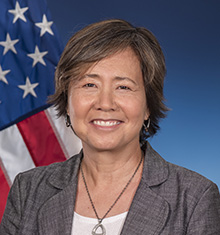About DARPA
Since 1958, DARPA has held to an enduring mission: To create and prevent strategic surprise for U.S. national security.
Working with innovators inside and outside government, we have delivered on that mission many times over – transforming the seemingly impossible into world-changing defense and national security capabilities. Often, DARPA innovations also become fixtures of modern civilian life.
Created in response to the launch of Sputnik in 1957, DARPA stands as our nation’s commitment to never again face a strategic technical surprise.
Unlike other agencies, DARPA is not satisfied with incremental advances. We push transformational breakthroughs – innovations that not only solve current challenges but also establish the U.S. as the leading driver of strategic technological invention.
DARPA programs focus on the fundamental research required to establish proof of concept. Performer teams define the path for putting new technologies into use in service of our nation’s warfighters, and transition partners lead the work of implementation, technology transfer, and commercialization.
Transforming military and civilian realities
Our results speak for themselves.
We’ve created game-changing military capabilities – precision weapons, stealth technology, nerve implants that return sensation to warriors who have lost limbs, and more – that stand as a marvel to militaries around the globe.
Our innovations have also transformed civilian society, leading to the Internet as we know it today, automated voice recognition and language translation, GPS receivers small enough to fit in consumer devices, and early investments in mRNA vaccine technology.
We do this by fueling an innovation ecosystem that engages academic, industry, and government partners. By fostering a nurturing environment, we empower diverse collaborators to succeed faster.
The DARPA difference
The secret to our success lies in the skill and tenacity of our program managers and our unique funding approaches.
These are extraordinary individuals who lead their fields and are hungry to push the limits of their disciplines. They define their programs, setting the course for research performers to deliver revolutionary concepts, foundational discoveries, and tactical innovations.
Constantly probing for the next big thing, program managers reach across scientific and engineering disciplines to uncover new challenges and potential solutions at the seams.
Alternative contracting vehicles allow DARPA to seize every opportunity to advance our mission. In addition to multi-year programs focused on developing technology from possibility to field-ready capability, our approach to funding includes:
- Challenges that invite ideas from nontraditional inventors, with prizes up to $10M
- Seedlings that move concepts from “disbelief” to “mere doubt”
- Explorations that accelerate the timeline from concept to award
- SBIR/STTR initiatives that can lead to new programs
Together, the exceptional leadership of our program managers and our unique funding opportunities make it possible for DARPA to do the seemingly impossible.
What comes next is limited only by the imagination.
Leadership

Dr. Stefanie Tompkins
Deputy Director, Defense Advanced Research Projects Agency
Dr. Stefanie Tompkins is the director of the Defense Advanced Research Projects Agency (DARPA). Prior to this assignment, she was the vice president for research and technology transfer at Colorado School of Mines.
Tompkins has spent much of her professional life leading scientists and engineers in developing new technology capabilities. She began her industry career as a senior scientist and later assistant vice-president and line manager at Science Applications International Corporation, where she spent 10 years conducting and managing research projects in planetary mapping, geology, and imaging spectroscopy. As a program manager in DARPA’s Strategic Technology Office, she created and managed programs in ubiquitous GPS-free navigation as well as in optical component manufacturing. Tompkins has also served as the deputy director of DARPA’s Strategic Technology Office, director of DARPA’s Defense Sciences Office – the agency’s most exploratory office in identifying and accelerating breakthrough technologies for national security – as well as the acting DARPA deputy director.
Tompkins received a Bachelor of Arts degree in geology and geophysics from Princeton University and Master of Science and Doctor of Philosophy degrees in geology from Brown University. She has also served as a military intelligence officer in the U.S. Army.

Mr. Rob McHenry
Deputy Director, Defense Advanced Research Projects Agency
Mr. Rob McHenry is the deputy director of the Defense Advanced Research Projects Agency (DARPA). He rejoined DARPA in September 2022 after serving as founder and chief executive officer of Bright Silicon Technologies, an optical microdevice manufacturing company.
McHenry has been an executive leader of organizations at the forefront of advanced technology development. He began his career as a nuclear submarine officer in the U.S. Navy, serving aboard the USS Portsmouth (SSN 707) and as a special assistant to the Chief of Naval Operations. Upon leaving military service, he supported DARPA including technical development for the DARPA Grand Challenge for Unmanned Ground Vehicles, and managed a consulting firm where he served as director of future development for the Littoral Combat Ship program. From 2007 to 2012, McHenry was a program manager in DARPA’s Tactical Technology Office, where he focused on complex autonomous systems in the maritime domain. His research in self-deploying unmanned ships (Sea Hunter) developed the first class of maritime vessels traveling long distances autonomously for months at a time. He also started the Long-Range Anti-Ship Missile program, which is a foundational breakthrough in autonomous weapons and successfully transitioned to the U.S. Navy as a program of record. In acknowledgment of his programs’ impact on national security, he received the DARPA Gamechanger Award in 2019. McHenry worked from 2012 until 2020 at the Palo Alto Research Center (PARC), where he held the roles of energy technology program manager, vice president of public sector operations, chief operating officer, and executive-in-residence for the founding of a new business unit for advanced materials manufacturing.
McHenry received a Bachelor of Science in marine engineering from the U.S. Naval Academy, and Master of Science in nuclear engineering from the Massachusetts Institute of Technology.
He serves on the board of trustees of the USS Hornet Sea, Air, and Space Museum in Alameda, California, and is the coinventor of six patents for energy and optical systems.
From pioneering the internet to spearheading the next generation of autonomous technology, DARPA’s innovation timeline showcases 60 years of groundbreaking advancements.

Technical Offices
Our six technical offices put DARPA’s mission into action. Their leaders and program managers plan and execute a constantly evolving portfolio of research programs, challenges, and transition activities.
Support Offices
DARPA’s leadership and technical offices are supported by a dedicated team of management and administrative professionals responsible for ensuring the secure, efficient and nimble operation of the Agency. The offices that provide essential support to the Agency include:
Budgets
The President’s FY2025 budget request for DARPA is $4.369 billion. The FY2024 enacted budget was $4.122 billion. Read the budget-related Congressional testimony by DARPA leadership here.
The Defense Department also maintains a searchable database for budget information. Read here.
Testimony
DARPA could not fulfill its mission of developing breakthrough technologies for national security without consistent broad support from Congress. DARPA’s congressional authorizers and appropriators sit on the Senate and House Armed Services Committees and the Appropriations Committees. Transcripts of testimony provided to these and other committees and subcommittees appear below.








